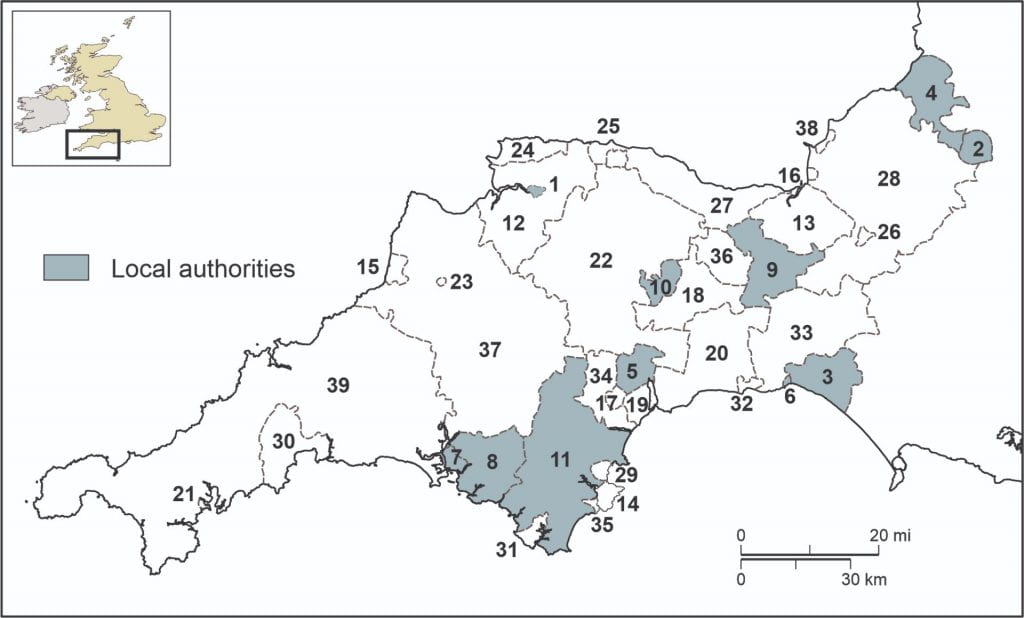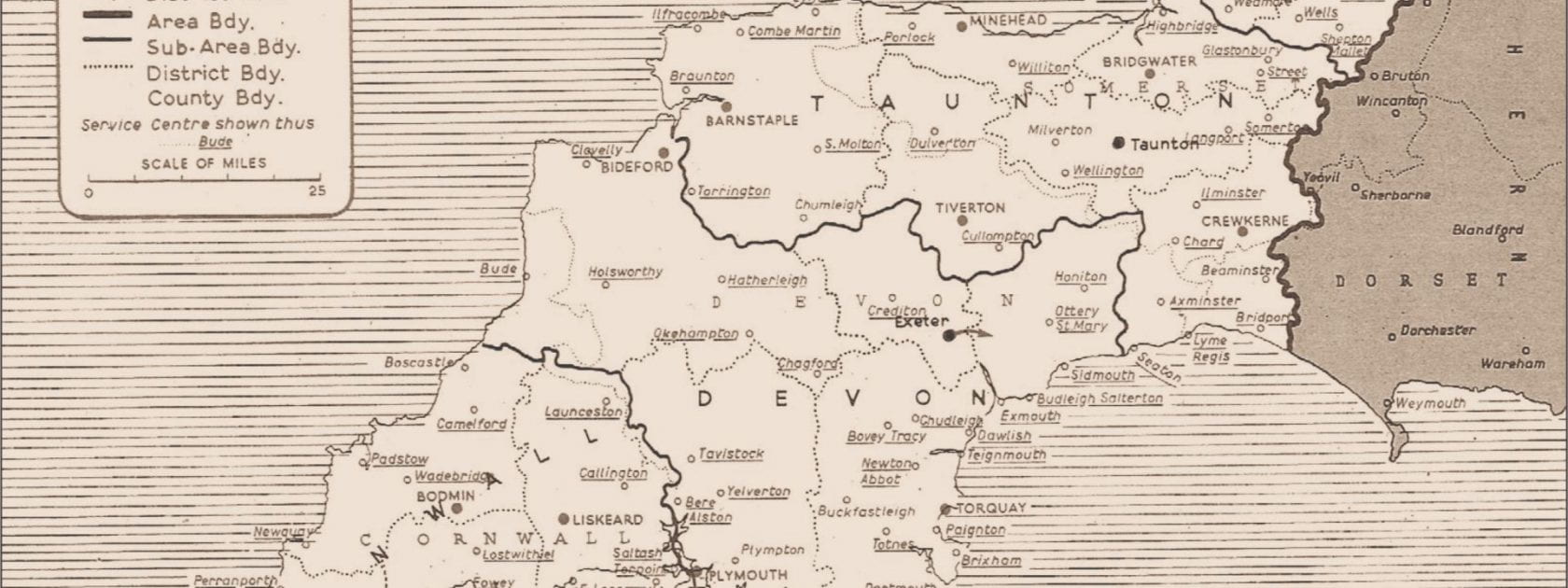Development of South West Electricity Supply Areas
The 1948 pattern illustrated in Figure 1 represented the climax of over 50 years of development. Unusually for a new innovation, electricity for public supply was subject to tight national regulations from an early stage. The Electric Lighting Act 1882 required “undertakings” to apply for a licence or provisional order from the Board of Trade. This requirement followed the precedents for earlier public utilities which had to “break up the streets” to lay mains or tracks. Electric Lighting Orders provided the basic conditions of a franchise to operate within a defined area, limiting the maximum prices that could be charged to consumers and, for private companies, a time limit of 21 years after which the local authority could purchase the system. An amendment in 1888 extended the time period to 42 years. All the Electric Lighting Orders were subject to Parliamentary approval. Major changes such as amalgamation of companies and extension of area required special acts.

Only a few public electricity systems were established under the 1882 Act. By 21 December 1882 the Board of Trade had received 109 applications for Electric Lighting Orders. After scrutiny by the office and Parliament, 69 ELOs were granted to local authorities and companies. Eight of these came to fruition over the next decade, while the others were abandoned as the early optimism waned given the uncertainties of the market for electricity and the limitations of the early technology.
Three of the applications in 1882 came from the South West. Bristol Corporation’s application was successful and an ELO was granted although the system did not open for another decade. The Union Electric Light and Power Co. Ltd applied for two franchises, one in Exeter and the other for Plymouth, Stonehouse and Devonport, but these “…were not considered as the provisions of the Act had not been complied with.”[6]
Although general urban electrification failed to take off in the 1880s, there was significant development of private systems which provided a market for electrical equipment, helped in the training of electrical workers, and gave opportunities to refine details of the new technology. In the South West, Ashton Court, a large country house on the southern fringes of Bristol, had a working system of 228 lamps installed by 1885.[7] This system was powered by a Crossley gas engine while at Hestercombe House, near Taunton, a water-powered dynamo installed in 1887 provided lighting for the estate.[8] Industrial establishments were also adopting the new form of illumination. W.D. & H.O. Wills introduced electric lighting in their Bristol tobacco factory in 1886[9] and the Anglo Bavarian Brewery in Shepton Mallet followed in 1889.
The take-off of public electric supply schemes began in 1889-90 with increased numbers of applications for Electric Lighting Orders. Nationally, there were 17 applications in 1889 and 161 in 1890. In the rest of the 1890s a further 459 applications were filed with the Board of Trade.[10]
While the Board of Trade developed regulations for safety, inspected and approved new systems as well as collecting annual returns, the Board provided no guidance on general policy or technical matters. These were left to the operator and consulting engineer to decide. Consequently after 1888 large numbers of fragmented operators developed DC and AC systems with little attempt at co-ordination. AC systems with frequencies varying from 25 cycles (Hz) to 100 cycles were established. The lack of standardization would become a major problem when interconnection between areas became advantageous.
An outline of development is presented in three phases: local initiative from the 1880s to World War I, state intervention to the 1940s and nationalisation from 1948.
[6] “Report by the Board of Trade respecting the applications to and Proceedings of, the Board of Trade under the Electric Lighting Act 1882. Parliamentary Papers 1883. HC 237.
[7] “Electric lighting in Somersetshire,” The Engineer vol 60, 1885, p.161.
[8] Peter Daniels ed. A Guide to the Industrial Archaeology of Somerset (Association for Industrial Archaeology, 2019), p. 52.
[9] Peter G. Lamb, Electricity in Bristol 1863-1948 (1981) p.11.
[10] Board of Trade, Proceedings under the Electric Lighting Acts. Parliamentary Papers 1899. HC 237.
[next]


